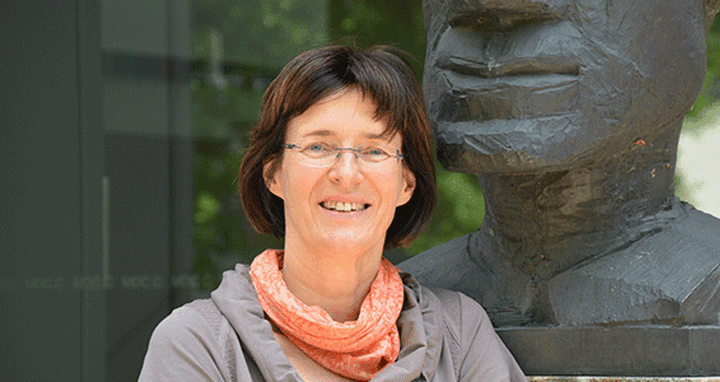"Constant dropping wears away a stone"
Dr. Christiane Nolte.
Why did you stand for the office of women's representative for a second time?
Women continue to require support in the sciences. They still have to battle with more obstacles than men, for example, when balancing a career and family. As a scientist, I know about this situation from my own experience. This is why the support for women at the MDC is a matter close to my heart, be it in the field of science or administration. I was lucky that after the birth of our daughter my husband took parental leave for her first year and was able to reduce his working hours when she entered the day care center at the age of one. He worked in a bank, so that was no problem. I would have been less able to afford such leave at the beginning of my career. I stopped working for about four months and then went back to the lab. I will not have anybody in my environment give me a bad conscience. My daughter's development benefited from the fact that she was put into day care at an early age.
What are your duties?
Generally, the women's representative is the contact person for questions regarding the professional advancement of women and the improved compatibility of family and work. I ensure that unequal treatment of women is avoided at the MDC. In doing so, I can invoke definite legal provisions. Funding agencies, such as the Deutsche Forschungsgemeinschaft (DFG – German Research Foundation), provide us with equality standards in the field of research, which we use as a basis. It is my job to advise and support the executive board in all measures for ensuring gender equality. This includes increasing the percentage of women in executive positions at the MDC. In the field of science, women holding W2 or W3 professorships still are very much in the minority. Although, by now, about the same number of men and women start a university course and more women than men actually successfully graduate, the number of women at the next higher career levels dwindles. At the MDC, the number of women remains above that of men with regards to graduates and postdocs, but after that it looks less favorable. As everywhere in the sciences, the MDC too experiences significant loss at the subsequent career levels, also called "leaky pipeline". We have about 25 per cent female heads of junior research groups; however, when taking into account all research groups, the figure drops to 15 per cent.
How can one increase the percentage of women at that level?
About two years ago, the Helmholtz Association and other extramural science institutions agreed on a cascade model. Yet the detailed concept has not yet finally been approved. In principle, flexible rates are calculated for all relevant career levels depending on the respective discipline, starting with the level of scientific young talent. The target rate of a given career level is calculated by way of a complex formula, which includes the actual percentage at the preceding level. For example, it is our goal to increase the percentage of women holding W2/W3 professorships to about 20 per cent (from currently 11 per cent) by the end of 2017.
We were able to win over two outstanding researchers through the Helmholtz Association's W2/W3 program for excellent female scientists: Ana Pombo for Systems Biology and Young-Ae Lee for Molecular Pediatric Allergology. Yet what is important is the even more active recruitment of highly qualified female scientists. I have an advisory role within the MDC's appointments committee and also am active in the equal opportunities task force at the Berlin Institute of Health. Of course, if, to begin with, too few good female scientists apply in response to job advertisements, I as women's representative cannot do much more than repeatedly remind the members of the appointments committee to actively address suitable female candidates.
Which other measures does the MDC implement to promote women?
Our MDC-internal mentoring program for female postdocs is a successful instrument, jointly organized by Gabriele Kollinger from Personnel Development and myself. In the course of that program, the participants learn, amongst other things, to identify their potential and use this in a more targeted manner for achieving their professional goals. In the Work and Family project group, we have launched numerous services for the compatibility of family and work over the course of the past years. In 2013, the MDC was again awarded the audit berufundfamilie certificate for its family-conscious human resource policy. The goals included doubling the capacity of child care services, a guideline for caring for relatives as well as fixed framework conditions for career re-entry following parental leave. The latter works agreement had to be temporarily suspended due to budget consolidation. The Cécile Vogt Sponsorship Program has likewise been axed for now. This was a particularly hard blow for the women at the MDC. As soon as we see light on the horizon, we will again campaign for these measures. It is important to stabilize the existing services and to time and again insist on gender equality at all levels: constant dropping wears away a stone!
Featured Image: Holds the office of women's representative at the MDC for the next four year's: Christiane Nolte. Photo: Maimona Id, MDC





